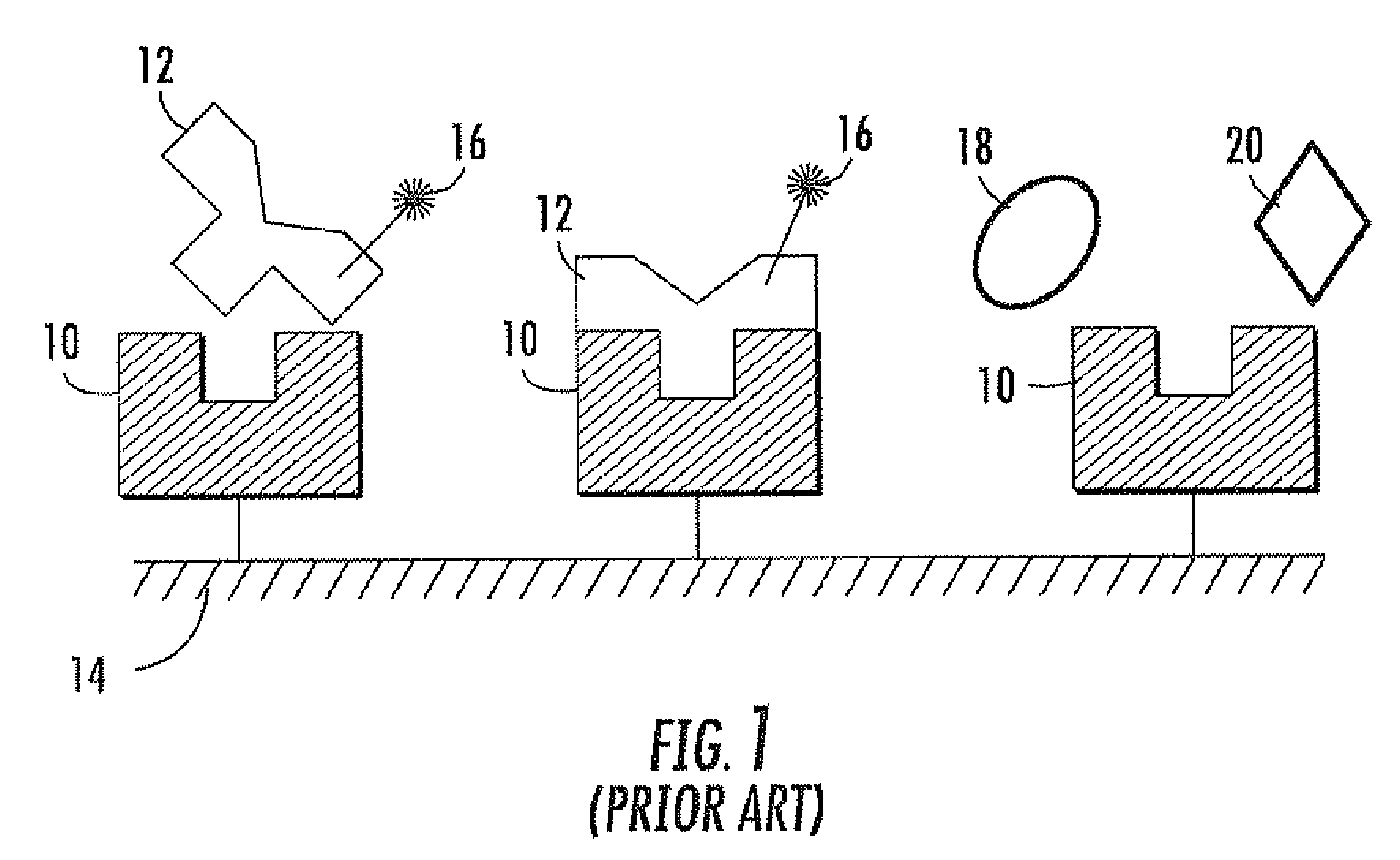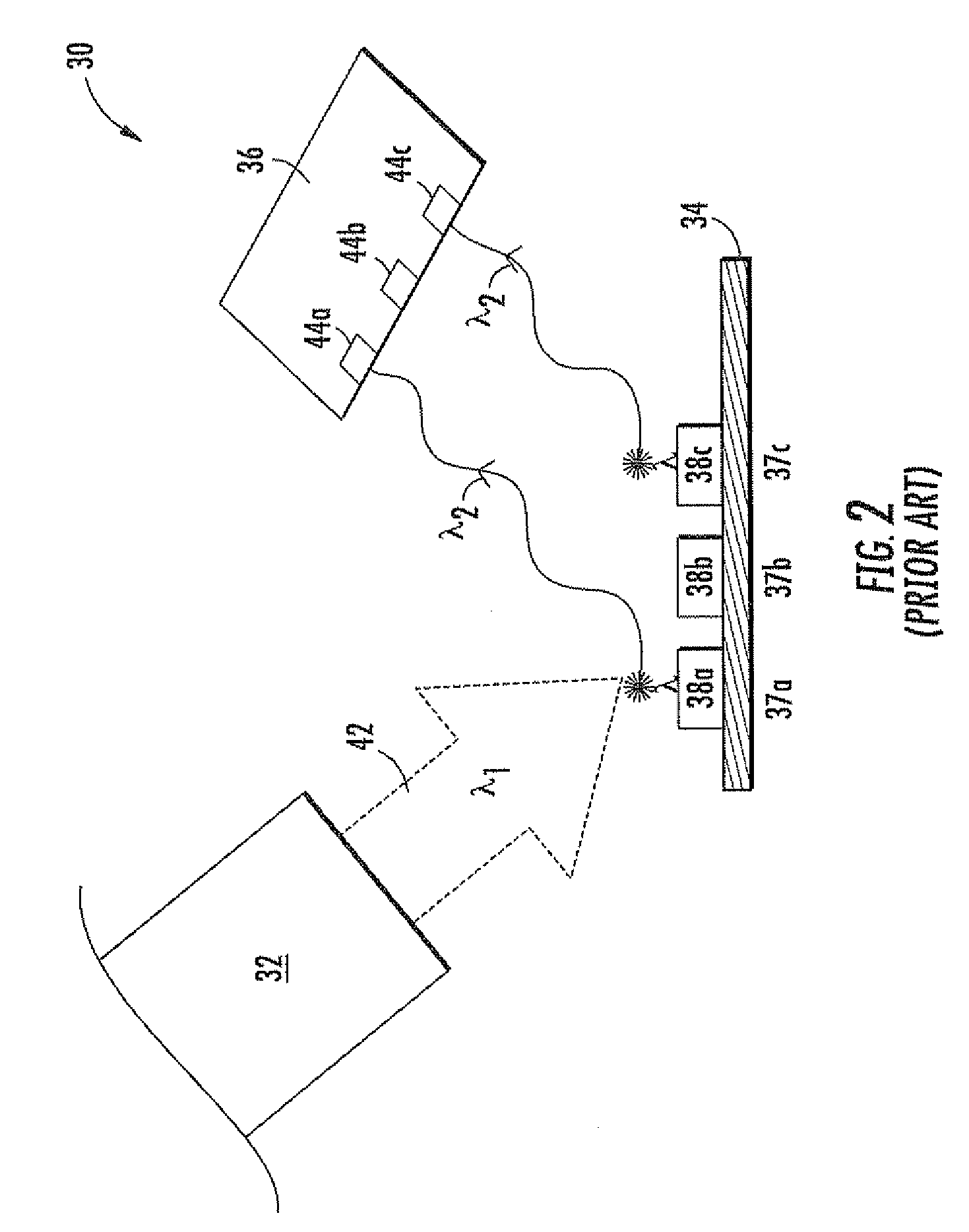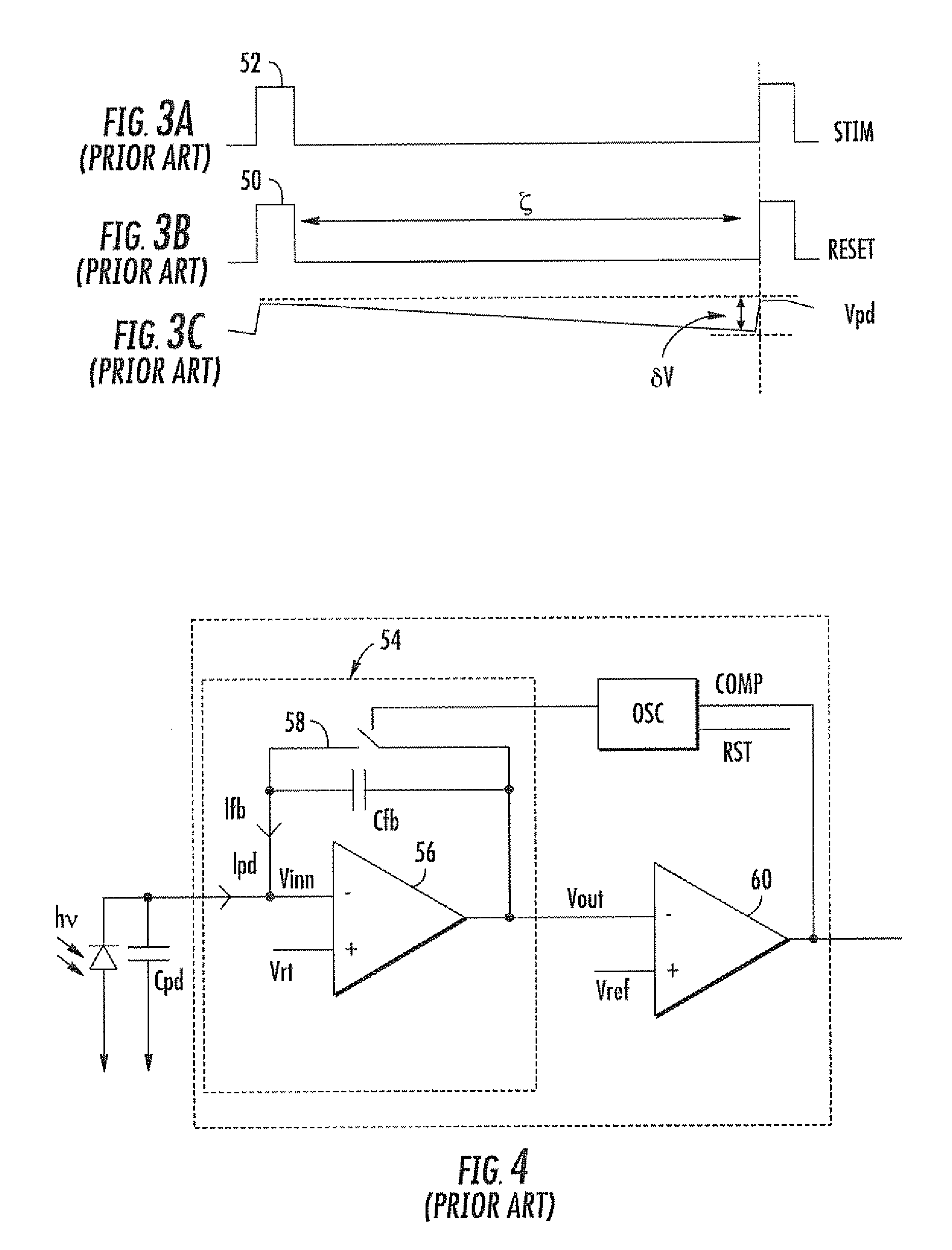Fluorescence biosensor
a biosensor and fluorescence technology, applied in biochemistry apparatus, spectrum investigation, photographic processes, etc., can solve the problems of inability to miniaturize, high cost, and complexity of the process of optimizing the focus of stimulating light sources (to compensate), so as to improve the sensitivity of fluorescence biosensors, and improve the sensitivity to fluorescent radiation
- Summary
- Abstract
- Description
- Claims
- Application Information
AI Technical Summary
Benefits of technology
Problems solved by technology
Method used
Image
Examples
Embodiment Construction
[0046]Referring to FIG. 5, a key feature of the fluorescence biosensor 100 is the repeated activation (by an activating signal φ1) of the stimulating light source 132 over a pre-defined period (known as the measurement period τ). The radiation from the stimulating light source 132 (i.e., the stimulating radiation λ1) stimulates the fluorescent labels 138 in the fluorescence biosensor 100 to repeatedly emit fluorescent radiation λ2 over the measurement period τ.
[0047]At the same time, the fluorescence biosensor 100 accumulates the small number of electrons produced in the biosensor's photodetector 136 by the repeated emissions of fluorescent radiation λ2. For the sake of simplicity, the photons of the stimulating radiation λ1 will be known as stimulating photons. Similarly, the photons of the fluorescent radiation λ2 will be known as fluorescent photons.
[0048]By accumulating the photogenerated electrons over the duration of the measurement period τ, the net photogenerated charge in t...
PUM
| Property | Measurement | Unit |
|---|---|---|
| time | aaaaa | aaaaa |
| time | aaaaa | aaaaa |
| fluorescence | aaaaa | aaaaa |
Abstract
Description
Claims
Application Information
 Login to View More
Login to View More - R&D
- Intellectual Property
- Life Sciences
- Materials
- Tech Scout
- Unparalleled Data Quality
- Higher Quality Content
- 60% Fewer Hallucinations
Browse by: Latest US Patents, China's latest patents, Technical Efficacy Thesaurus, Application Domain, Technology Topic, Popular Technical Reports.
© 2025 PatSnap. All rights reserved.Legal|Privacy policy|Modern Slavery Act Transparency Statement|Sitemap|About US| Contact US: help@patsnap.com



